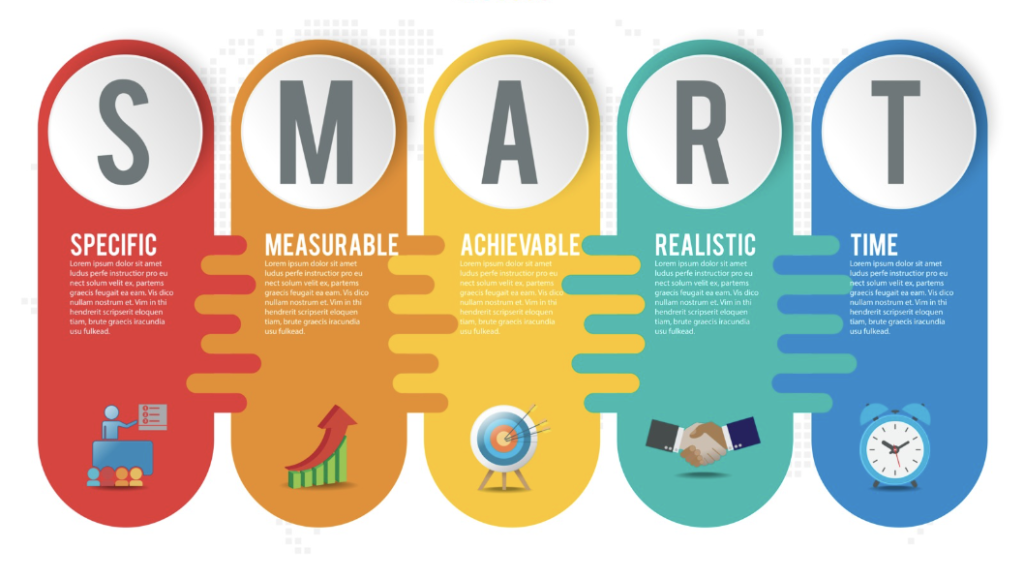
In today’s fast-paced digital landscape, businesses need a clear, structured, and adaptable marketing strategy to stay ahead of the competition. A well-designed marketing plan ensures that your brand reaches the right audience, communicates value effectively, and drives consistent growth. However, creating an effective marketing strategy is not just about promotions and advertisements—it requires careful planning, data analysis, and execution.
This blog will guide you through the essential steps of building a powerful marketing strategy, from setting goals to optimizing campaigns for success.
Step 1: Define Your Marketing Strategy Goals
The first and most important step in creating an effective marketing strategy is setting clear, measurable, and achievable goals. These goals should align with your overall business objectives and provide direction for all marketing activities.
Using the SMART Framework
A strong marketing plan should follow the SMART goal-setting framework:
- Specific: Define what you want to achieve (e.g., increase website traffic, boost brand awareness, generate leads).
- Measurable: Set KPIs such as conversion rates, customer acquisition costs, and engagement metrics.
- Achievable: Ensure your goals are realistic given your resources and budget.
- Relevant: Align marketing objectives with business priorities.
- Time-bound: Establish a deadline for achieving your goals (e.g., 20% sales increase in six months).
Example SMART Goal: “Increase social media engagement by 30% within three months through organic content and paid promotions.”
Step 2: Identify Your Target Audience
To build an effective marketing strategy, you must understand who your ideal customers are. Without a defined audience, your marketing efforts may not generate the desired results.
How to Identify Your Target Audience For Marketing Strategy
- Analyze Existing Customers: Look at demographic data, buying behaviors, and pain points.
- Conduct Market Research: Use surveys, interviews, and industry reports.
- Create Buyer Personas: Develop detailed profiles of your ideal customers, including age, income, location, interests, and challenges.
- Segment Your Audience: Group customers based on similar traits to create personalized marketing campaigns.
Example Buyer Persona:
- Name: Mark, 35
- Occupation: Small Business Owner
- Pain Point: Struggles with digital marketing and online visibility
- Solution: Wants an easy-to-use platform with automated marketing tools
Step 3: Choose the Right Marketing Channels
Selecting the right channels ensures that your marketing efforts reach your audience efficiently. The best platforms depend on your industry, audience, and goals.
Popular Marketing Channels & Their Uses
| Channel | Best For |
|---|---|
| Social Media (Facebook, Instagram, LinkedIn, TikTok) | Brand awareness, engagement, lead generation |
| Email Marketing | Customer retention, nurturing leads, promotions |
| SEO & Content Marketing | Long-term organic traffic, credibility building |
| PPC Advertising (Google Ads, Facebook Ads) | Quick lead generation, product promotions |
| Influencer Marketing | Expanding reach, brand credibility |
Choosing the Right Channel: If your goal is to increase brand awareness among young audiences, TikTok and Instagram may be the best platforms. If your focus is B2B marketing, LinkedIn and email campaigns will yield better results.
Step 4: Develop a Strong Value Proposition
A strong marketing strategy needs a compelling value proposition that tells customers why they should choose your product or service.
How to Craft an Effective Value Proposition to Drive Marketing Strategy
- Identify the Problem: What challenge does your product solve?
- Highlight Benefits: How does it make life easier or better?
- Differentiate from Competitors: What makes your offering unique?
- Use Clear and Simple Language: Avoid jargon; make it easily understandable.
Example:
- Nike: “Just Do It.” (Inspires action and confidence)
- Shopify: “The platform to start, run, and grow your business.” (Clear and solution-focused)
Step 5: Create a Content Strategy
Content marketing plays a vital role in modern marketing plans. Creating high-quality, engaging content builds trust, educates your audience, and drives traffic.
Types of Content to Include in Your Marketing Strategy
- Blog Posts & Articles (SEO-optimized, educational, industry insights)
- Social Media Content (Visuals, reels, interactive posts)
- Videos & Webinars (Tutorials, product demos, live Q&A)
- Email Campaigns (Newsletters, promotional emails, product updates)
- Case Studies & Testimonials (Proof of customer success)
Content Scheduling: Use tools like Trello, Buffer, or Hootsuite to maintain a content calendar and post consistently.
Step 6: Budget Allocation & Resource Planning
A marketing plan requires efficient budget management to maximize ROI. Determine how much to allocate for different marketing activities based on past performance and expected returns.
Marketing Budget Allocation Example
| Activity | Budget Percentage |
| Content Marketing & SEO | 30% |
| Paid Advertising (PPC, Social Ads) | 35% |
| Influencer & Affiliate Marketing | 15% |
| Email Marketing & CRM Tools | 10% |
| Market Research & Software | 10% |
If a specific strategy is driving strong ROI, adjust budgets accordingly.
Step 7: Track, Analyze, and Optimize Performance
A successful marketing strategy is not static—it requires continuous analysis and refinement.
Key Metrics to Track
- Website Traffic & Conversion Rates
- Engagement Rate (Likes, Shares, Comments)
- Customer Acquisition Cost (CAC)
- Return on Investment (ROI)
Use tools like Google Analytics, Facebook Insights, HubSpot, and SERanking to measure and optimize performance.
Conclusion
Building an effective marketing strategy requires goal-setting, audience research, channel selection, value proposition clarity, content creation, budgeting, and ongoing optimization. By following these steps, businesses can enhance brand visibility, improve customer engagement, and drive higher conversions.
At Nu Terra Labs, we help businesses craft data-driven marketing strategies that deliver real results. Book a consultation today to optimize your marketing efforts and achieve your business goals.

